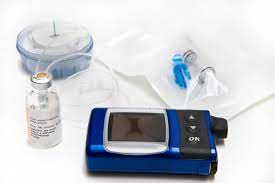Your Essential Guide To Choosing The Best Insulin Pump For You

A disease that can strike children and adults, diabetes is one of the most common medical conditions in the United States. However, when properly managed, it is very possible for people to enjoy their favorite activities and have an excellent quality of life. To help make this possible, you may want to consider the use of an insulin pump. To ensure you have the information you need for this important decision, here is your essential guide to choosing the right insulin pump for your needs.
Who Should Use an Insulin Pump?
Since diabetes can affect people in various ways, it is of course always best to speak to your endocrinologist or family doctor about the advantages and disadvantages of an insulin pump. However, in most cases, an insulin pump can be used with both children and adults. Should you be looking for an insulin pump for your child, it is best to go with one that is specifically child-friendly, meaning it will be easy for both you and your child to operate. Generally, if you regularly experience highs and lows with your blood sugar, are tired of taking multiple injections daily, or are prone to stacking insulin, you may be a good candidate for an insulin pump.
How Does an Insulin Pump Work?
Since the best insulin pump has very advanced technology, it is often quite easy to operate. Once the cannula is placed under your skin, the pump can regularly monitor your insulin levels and adjust accordingly to provide you with customized amounts of insulin for your body. Most also use a reservoir or cartridge for your insulin, which usually will hold a three-day supply of insulin. As for power, most now use rechargeable batteries that can last as long as one month before needing to be recharged. Once your pump is programmed with your basal and bolus rates and your doses, the pump acts much like what some refer to as a “bionic pancreas,” meaning you will have to do very little after the initial programming of your pump.
How Much Do Insulin Pumps Cost?
When it comes to costs, these can vary depending upon the type of insulin pump you use, how much of the cost will be covered by your insurance company, and other factors. For some patients whose doctors prescribe an insulin pump, the cost may be zero. However, should insurance not cover your costs, you could potentially be looking at spending as much as $7,000 for a state-of-the-art insulin pump. In some cases, free or low-cost insulin pumps can be available from various programs, so you should always ask your doctor or diabetes educator about this option. Finally, also take into consideration the cost of your insulin, since insulin pumps are made to be used with rapid-acting insulin, which is always more expensive.
Is an Insulin Pump Easy to Use?
As insulin pumps have evolved, most have become much more user-friendly and easy for people of all ages to use. However, this can vary from pump to pump. Therefore, talk to your doctor or diabetes educator to determine just how many bells and whistles you’ll need on your insulin pump. Factors to keep in mind include how often your pump’s cannula and infusion set needs to be changed, if it will require a finger stick every 12 hours for calibration, whether you desire a touch-screen or a pump that has buttons, and if you want a pump that is waterproof, which is important for individuals who lead active lifestyles.
System Support
Like any technological device, even the best insulin pump may experience an issue now and then. If this occurs, you need to have a manufacturer that can answer your questions and help ensure your pump continues to operate correctly and efficiently. Therefore, always take into consideration the levels of customer and technical support offered for your pump. Otherwise, you may have much more difficulty using your pump than you ever imagined.
Whether you’ve simply grown tired of taking shot after shot each day or have seen your diabetes progress to the point where increased monitoring of your blood sugar levels is required, using an insulin pump may be the solution to your problem.